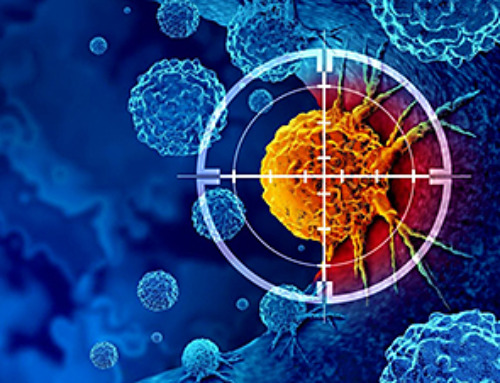A team of researchers has developed a novel water filtration system that combines nanotechnology with 3D printing, aiming to create a low-cost, sustainable solution for greywater treatment. As reported in Micro & Nano Letters, the study demonstrates this with a honeycomb-structured filter made from 3D-printed recycled nylon, coated with titanium dioxide (TiO2) nanoparticles.
Nanomaterials such as TiO2 are often studied in water treatment for their photocatalytic and antimicrobial properties, as well as their large surface area. These characteristics enable them to degrade organic pollutants and neutralize pathogens effectively.
However, it can be difficult to integrate such materials into practical, long-lasting filtration systems. Traditional membranes often suffer from fouling, limited operational lifespan, and high manufacturing costs.
To address this, the researchers used fused filament fabrication (FFF), a 3D printing technique that allows precise control over filter geometry. This approach enables the design of customizable, reusable filtration units that capitalize on the benefits of nanomaterials while improving mechanical stability and ease of production.
Fabricating the Filters
The team used FFF to print honeycomb-shaped modules from recycled nylon filament, and then applied the TiO2 nanoparticles via spin-coating.
This method was chosen to improve clogging behaviour and increase contaminant retention. The honeycomb design was intended to create a tortuous flow path, improving filtration through both dead-end and depth filtration modes.
Once fabricated, the filters were subjected to mechanical testing, porosity analysis, and nanomaterial distribution checks. Their performance was then assessed by passing greywater through the filters in dead-end and depth filtration modes.
Key metrics evaluated included turbidity, total suspended solids (TSS), biochemical oxygen demand (BOD), chemical oxygen demand (COD), and microbial removal efficiency. Although the photocatalytic potential of TiO2 was factored into the analysis, it wasn’t extensively tested under real-world lighting conditions.
The study also examined filter fouling across cycles, overall stability, and possible regeneration techniques, focusing on how nanomaterial integration affects performance and durability over time.
Performance And Limitations
The nanocomposite filters showed significant improvements in removing organic contaminants and inactivating microbes compared to plain nylon filters. This enhancement was largely attributed to TiO2’s photocatalytic activity, which helps break down organic compounds and generate reactive oxygen species capable of degrading biofilms.
In initial cycles, the coated filter achieved removal rates of up to 85 % for BOD and 80 % for COD in dead-end mode. Depth filtration yielded slightly lower removal efficiencies of 80 % BOD and 75 % COD. After five filtration cycles, these figures dropped to 58 % for BOD and 50 % for COD, indicating sustained, though diminishing, performance over time.
Importantly, the addition of TiO2 did not compromise the mechanical strength of the nylon filters, which retained structural integrity across multiple filtration cycles. The filters also exhibited increased resistance to fouling, which is a common issue in membrane systems, thanks to self-cleaning TiO2.
Despite this, the system struggled to reduce turbidity and TSS to levels required for potable water. Larger particles often passed through due to the relatively large pore size and open-cell architecture of the honeycomb design, which favours flow efficiency over fine particulate capture.
The findings suggest that further refinement is needed, such as finer pore structures or a multilayer filtration approach, to improve filtration precision and consistency.
Future Directions
The study demonstrates the impressive performance when combining nanomaterials with 3D printing for filtration systems, especially in decentralized or resource-limited settings. The integration of TiO2 not only boosts contaminant removal but also enhances the filter’s durability and reusability.
Yet, to fully meet potable water standards, further optimization is still needed. This includes refining the filters to improve their long-term performance under real-world conditions.
The research indicates the future of nanotechnology in water treatment, with practical applications in regions where traditional infrastructure may be lacking. Continued investigation into nanocomposite materials and scalable fabrication techniques will be key to turning these lab-scale innovations into everyday applications.
Journal Reference
Saha S. K., et al. (2025). Fused filament fabrication of recycled nylon‐TiO₂ honeycomb filters for greywater treatment. Micro & Nano Letters, 1–18. DOI: 10.1002/mna2.70009, https://ietresearch.onlinelibrary.wiley.com/doi/10.1049/mna2.70009
News
Magnetic nanoparticles that successfully navigate complex blood vessels may be ready for clinical trials
Every year, 12 million people worldwide suffer a stroke; many die or are permanently impaired. Currently, drugs are administered to dissolve the thrombus that blocks the blood vessel. These drugs spread throughout the entire [...]
Reviving Exhausted T Cells Sparks Powerful Cancer Tumor Elimination
Scientists have discovered how tumors secretly drain the energy from T cells—the immune system’s main cancer fighters—and how blocking that process can bring them back to life. The team found that cancer cells use [...]
Very low LDL-cholesterol correlates to fewer heart problems after stroke
Brigham and Women's Hospital's TIMI Study Group reports that in patients with prior ischemic stroke, very low achieved LDL-cholesterol correlated with fewer major adverse cardiovascular events and fewer recurrent strokes, without an apparent increase [...]
“Great Unified Microscope” Reveals Hidden Micro and Nano Worlds Inside Living Cells
University of Tokyo researchers have created a powerful new microscope that captures both forward- and back-scattered light at once, letting scientists see everything from large cell structures to tiny nanoscale particles in a single shot. Researchers [...]
Breakthrough Alzheimer’s Drug Has a Hidden Problem
Researchers in Japan found that although the Alzheimer’s drug lecanemab successfully removes amyloid plaques from the brain, it does not restore the brain’s waste-clearing system within the first few months of treatment. The study suggests that [...]
Concerning New Research Reveals Colon Cancer Is Skyrocketing in Adults Under 50
Colorectal cancer is striking younger adults at alarming rates, driven by lifestyle and genetic factors. Colorectal cancer (CRC) develops when abnormal cells grow uncontrollably in the colon or rectum, forming tumors that can eventually [...]
Scientists Discover a Natural, Non-Addictive Way To Block Pain That Could Replace Opioids
Scientists have discovered that the body can naturally dull pain through its own localized “benzodiazepine-like” peptides. A groundbreaking study led by a University of Leeds scientist has unveiled new insights into how the body manages pain, [...]
GLP-1 Drugs Like Ozempic Work, but New Research Reveals a Major Catch
Three new Cochrane reviews find evidence that GLP-1 drugs lead to clinically meaningful weight loss, though industry-funded studies raise concerns. Three new reviews from Cochrane have found that GLP-1 medications can lead to significant [...]
How a Palm-Sized Laser Could Change Medicine and Manufacturing
Researchers have developed an innovative and versatile system designed for a new generation of short-pulse lasers. Lasers that produce extremely short bursts of light are known for their remarkable precision, making them indispensable tools [...]
New nanoparticles stimulate the immune system to attack ovarian tumors
Cancer immunotherapy, which uses drugs that stimulate the body’s immune cells to attack tumors, is a promising approach to treating many types of cancer. However, it doesn’t work well for some tumors, including ovarian [...]
New Drug Kills Cancer 20,000x More Effectively With No Detectable Side Effects
By restructuring a common chemotherapy drug, scientists increased its potency by 20,000 times. In a significant step forward for cancer therapy, researchers at Northwestern University have redesigned the molecular structure of a well-known chemotherapy drug, greatly [...]
Lipid nanoparticles discovered that can deliver mRNA directly into heart muscle cells
Cardiovascular disease continues to be the leading cause of death worldwide. But advances in heart-failure therapeutics have stalled, largely due to the difficulty of delivering treatments at the cellular level. Now, a UC Berkeley-led [...]
The basic mechanisms of visual attention emerged over 500 million years ago, study suggests
The brain does not need its sophisticated cortex to interpret the visual world. A new study published in PLOS Biology demonstrates that a much older structure, the superior colliculus, contains the necessary circuitry to perform the [...]
AI Is Overheating. This New Technology Could Be the Fix
Engineers have developed a passive evaporative cooling membrane that dramatically improves heat removal for electronics and data centers Engineers at the University of California San Diego have created an innovative cooling system designed to greatly enhance [...]
New nanomedicine wipes out leukemia in animal study
In a promising advance for cancer treatment, Northwestern University scientists have re-engineered the molecular structure of a common chemotherapy drug, making it dramatically more soluble and effective and less toxic. In the new study, [...]
Mystery Solved: Scientists Find Cause for Unexplained, Deadly Diseases
A study reveals that a protein called RPA is essential for maintaining chromosome stability by stimulating telomerase. New findings from the University of Wisconsin-Madison suggest that problems with a key protein that helps preserve chromosome stability [...]






















